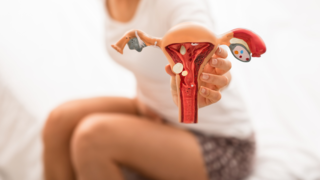In this article:
The positive news is that many parents can breastfeed after these procedures, but the extent to which you can produce milk and the ease of breastfeeding may vary.
Breast Surgery and Its Impact on Breastfeeding
Your breasts are complex, made up of fatty tissue, nerves, connective tissue, and glandular tissue that produces milk. Any surgery on your breasts can affect the milk ducts, nerves, or glandular tissue, which may influence how much milk you produce or how easily it flows. The type of surgery, the technique used, and how much tissue was affected all play a role in your breastfeeding experience.Breastfeeding After Breast Augmentation
Breast augmentation involves placing implants or fat transfers either above or below the chest muscle to change the size or shape of your breasts. Many individuals worry that implants will prevent breastfeeding, but in most cases, you can still nurse your baby safely.- Safety of implants: There’s no evidence that silicone implants cause problems for babies during breastfeeding.
- Impact on milk supply: Implants placed below the muscle are less likely to affect milk production compared to those placed above. This is because implants below the muscle avoid interfering with the breast ducts and mammary glands.
- Issues in nerve or milk ducts: Surgery can sometimes damage nerves or milk ducts, which may reduce milk supply or affect the milk ejection reflex.
- Latching challenges: Very large implants may make it harder for your baby to latch properly. Working with a lactation consultant before delivery can help you prepare and address any latching issues.
- Timing matters: The longer it’s been since your surgery, the better your chances of having a sufficient milk supply. Over time, some nerves and ducts may regain function or form new pathways.
- Pre-existing breast shape: If you had augmentation due to tubular or widely spaced breasts, this might indicate less glandular tissue to begin with. This condition is known as mammary hypoplasia (underdeveloped breasts), which could naturally limit milk production.
Breastfeeding After Breast Reduction
Breast reduction, or reduction mammoplasty, reduces breast size by removing fat, skin, and glandular tissue. This procedure is more likely to affect breastfeeding compared to augmentation because it involves removing tissue that produces milk.- Impact on milk production: The amount of glandular tissue removed during surgery can reduce the number of milk-producing glands, potentially leading to a lower milk supply. The extent of this impact depends on how much tissue was removed.
- Nipple and areola position: Your milk supply is less likely to be affected if the nipple and areola are kept attached to the underlying breast tissue during surgery. However, if they were completely detached and moved, the milk ducts and nerves may have been severed. This can make it harder for milk to flow.
- Engorgement risks: You might experience engorgement or swelling if milk is produced but can’t flow out due to severed ducts. This can be uncomfortable, but your body will gradually stop producing the unused milk over a couple of weeks. Consult your doctor for pain relief and use cold compresses to help manage inflammation.
- Surgical technique: Techniques like the superior-medial pedicle vertical breast reduction increase the chances of successful breastfeeding as they are designed to preserve milk ducts and nerves. Discussing this with your surgeon before the procedure can make a difference.
- Scar tissue and sensation: Scar tissue from surgery might block milk ducts and affect milk flow. Loss of nipple sensation could also make breastfeeding harder by impacting the milk ejection reflex (let-down reflex).
Breastfeeding After Other Breast Surgeries
Other breast surgeries, such as those for breast cancer, can also impact breastfeeding. These procedures often involve more extensive tissue removal or treatments that affect milk production.- Lumpectomy and mastectomy: A lumpectomy (removing a small tumour) or mastectomy (removing part or all of the breast) can reduce or eliminate milk production on the affected side by removing milk ducts and glandular tissue. If only one breast is affected, you can often breastfeed from the unaffected breast. In many cases, one healthy breast can make enough milk for your baby.
- Radiation therapy: Radiation to the breast typically prevents that breast from producing milk in the future. If radiation was part of your treatment, you may need to rely on the unaffected breast or supplement feedings.
- Chemotherapy concerns: Most chemotherapy treatments are not compatible with breastfeeding because the drugs can pass into the milk and harm your baby. Chemotherapy can also increase the risk of severe mastitis (breast inflammation) due to a weakened immune system.
Maximising Your Milk Supply After Breast Surgery
Regardless of the type of breast surgery you’ve had, there are steps you can take to boost your milk supply and make breastfeeding as successful as possible. The important part is to start early and be consistent.- Frequent feeding: In the first two to three weeks after delivery, put your baby to the breast every two to three hours. This stimulates milk production by creating a supply-and-demand cycle.
- Hand expression: After feedings, hand-express any remaining milk to encourage your breasts to produce more. This can help recruit more milk-producing cells over time.
- Lactation support: Work with a lactation consultant during pregnancy and after delivery. They can teach you techniques to stimulate milk production and address any challenges.
- Monitor baby’s weight: Babies of parents who’ve had breast surgery should be closely monitored for adequate weight gain. Your paediatrician or lactation consultant can help make sure your baby is getting enough nutrition.
- Emotional support: Breastfeeding after surgery can be emotionally challenging, especially if you face low milk supply or other difficulties. A lactation consultant can provide guidance and reassurance to help you meet your breastfeeding goals.
Supplementing Breastfeeding
Supplementing with donor milk or formula can support your baby’s nutritional needs if you can’t produce enough milk due to breast surgery.- Supplemental nursing systems: These devices use a tube that runs from a container of donor milk or formula to your nipple. It allows your baby to feed from both your breast and the tube at the same time. This maintains the breastfeeding experience while your baby gets enough milk.
- Bottle feeding: You can express your breast milk and feed it to your baby via a bottle, supplementing with formula or donor milk as needed.
- Skin-to-skin contact: Even if your baby isn’t getting all their nutrition from breastfeeding, skin-to-skin time during feeds can strengthen your bond and provide other benefits, like regulating your baby’s heart rate and temperature.
Preparing for Breastfeeding After Surgery
Taking certain steps before and after your baby is born can set you up for breastfeeding success. Take a look at how to prepare:- Prenatal consultation: Meet with a breastfeeding counsellor or lactation consultant during pregnancy to discuss your surgery and create a breastfeeding plan. They can assess your breasts for signs of insufficient glandular tissue, like tubular or asymmetrical breasts, and provide proper advice.
- Discuss with your surgeon: Talk to your surgeon about techniques that preserve milk ducts and nerves if you’re planning breast surgery and want to breastfeed in the future.
- Postpartum support: Work closely with your doctor to monitor your baby’s growth after delivery. They can also check for other conditions that might affect your milk supply, like thyroid dysfunction or polycystic ovarian syndrome.
- Breastfeeding workshops: Attending a workshop during pregnancy can answer your questions and boost your confidence. It’s a great way to learn practical tips and connect with other parents.
Emotional and Psychological Support
Breastfeeding after breast surgery can feel emotionally tough, especially if you’ve had breast cancer treatment or struggle with low milk supply. It’s normal to feel worried or disappointed if breastfeeding doesn’t go as planned, but you’re not alone. You may face social or psychological challenges around breastfeeding if you’ve had breast cancer. Your healthcare professional can connect you with support groups or counsellors to help you manage these feelings. Breastfeeding isn’t just about producing a full milk supply. Even partial breastfeeding or nurturing your baby at the breast with a supplemental system can be fulfilling and beneficial for both of you.Remember to be kind to yourself because every parent’s breastfeeding journey is different. Focus on what works for you and your baby, and don’t hesitate to seek support from professionals or loved ones.
Timing and Future Pregnancies
The timing of your surgery and future pregnancies can influence your breastfeeding experience:- Healing time: It takes about five to six months for your breasts to heal fully after breast reduction. You can follow a normal pregnancy routine after this period, but the surgery’s impact on breastfeeding will still depend on the factors mentioned earlier.
- Waiting for surgery: If you’re considering breast augmentation or reduction but plan to have children, waiting until after you’ve finished having babies may reduce the need for additional surgeries. Pregnancy can change breast tissue and potentially affect the results of your surgery.
FAQs on Breastfeeding After Breast Surgery: How Augmentation or Reduction Affects Milk Supply
- Can I breastfeed after having breast surgery?
Yes, many people can breastfeed after surgery. Your ability to do so depends on the type of surgery, how it was performed, and whether milk ducts or nerves were affected. - Are silicone implants safe for breastfeeding?
Yes. There’s no evidence that silicone from implants passes into breast milk or harms your baby. - How do I prepare to breastfeed if I had surgery in the past?
Meet with a lactation consultant during pregnancy. They can assess your breast structure and help you build a personalised breastfeeding plan.






